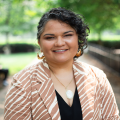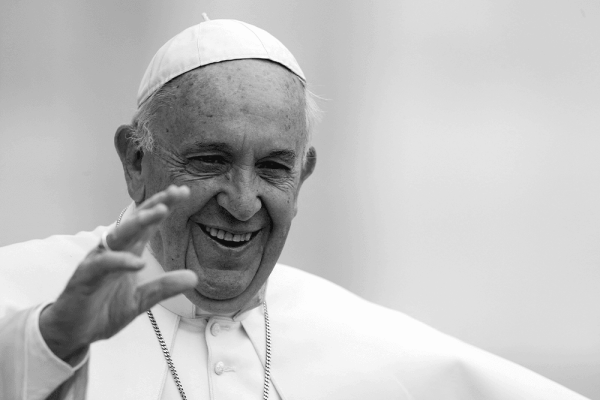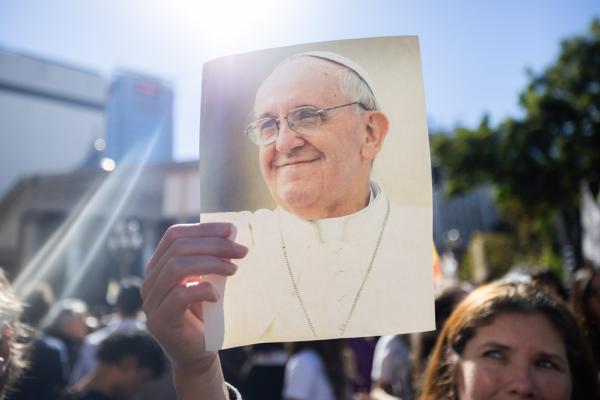The night before my oath ceremony to become a U.S. citizen, I read a chapter of Robin Wall Kimmerer’s Braiding Sweetgrass, where she wondered what it would be like to be a citizen of Maple Nation, the bioregion in North America that stretches from the Great Lakes to the northeast corner of the United States and southeast Canada. In Maple Nation, which transcends political boundaries, sugar maples are more abundant than people and, as valued citizens, they provide gifts for the sustenance and flourishing of life, including shade to cool off buildings, syrup to be enjoyed and traded, and beautiful landscapes to adorn the community. Sugar maples make great citizens.
But modernity has persuaded many people in the United States that nature is not a provider or sustainer of life, but rather an inferior object to be used and exploited for economic purposes. Modernity claims humans are the only citizens — the owners and rulers of nature – thus fracturing our relationship with nature and with one another as we compete to amass or inherit resources. This voracious system is built to protect those with wealth and their resources rather than to protect human and natural life.
The deadly consequences of this paradigm are evident: Last month, the United States experienced the hottest June on record since we began keeping track 127 years ago. Human-caused climate change exacerbated the unprecedented heat wave that swept through the Pacific Northwest. The emergency center of the Oregon Health and Science University was overcrowded with patients, breathless and dizzy, relating stories of sizzling skin.
Experts consider extreme heat the deadliest kind of weather disaster in the U.S. And not all humans suffer equally under extreme heat conditions: Farmworkers and others who must perform their duties outside; unhoused people; and people with diabetes, heart conditions, and the elderly are especially vulnerable. The impact of extreme heat is also lethal to nature. An estimated 1 billion sea creatures were killed in the recent heatwave; images of thousands of scorched dead mussels lining the coast of British Columbia are just one more bit of evidence: Humans are not good rulers of nature.
But another system is possible — and already exists: Indigenous communities have long shared a more reciprocal relationship with creation, often honoring trees and other natural elements as elder siblings. Mother Earth is the oldest ancestor; she knows our story as peoples and has witnessed our transformation.
Worldviews like sumak kawsay — often translated to el buen vivir, or living well — held by the Gunadule people of Abya Yala (the Americas) have long-recognized the dignity of Mother Earth and her interdependent relationship with human beings. Sumak kawsay recognizes humanity as a part of nature, not an owner or ruler of it. In that spirit, the rights of both nature and humans must be protected as one and the same.
Many of these contemporary attitudes about human dominance over nature are rooted in colonial ideas about cultural and racial superiority — principles that the Christian church helped uphold and spread.
Western interpretations of scripture often place humans as the crown of creation, crafting theologies of dominance that justify the abuses humans commit against creation. But Indigenous and farmworker readings of scripture highlight the principles of stewardship and right relationship that mirror the long-held ancestral wisdom of their communities.
We see this wisdom echoed in the first chapters of Genesis, where human beings are given the responsibility to steward the Earth, “to till it and keep it” (2:15). These agriculture-centered readings also point out that land and creation are not inanimate objects; rather, the Earth is active and responsive to God’s invitation to put forth vegetation, plants, and trees of many kinds (Genesis 1:11) and bring forth animal life (Genesis 1:24). The Earth is present as an agent in creation. Animals too are invited to fill the earth and multiply, to participate in expanding the burgeoning biodiversity (Genesis 1:22).
The principles of sumak kawsay inform climate justice movements in the United States today, and communities that have borne the brunt of climate change are leading the way in adapting to it, even though they are not the leading instigators of climate change. For example, Climate Justice Alliance (CJA) summarizes el buen vivir as living well without living better at the expense of others, affirming that “workers, community residents, women and Indigenous Peoples around the world have a fundamental human right to clean, healthy and adequate air, water, land, food, education, and shelter.” The organization works toward a just transition from an extractive economy to a regenerative economy, a model where traditional worldviews and cultures are favored and wealth is put to work for the good of all, not just the elites.
Climate actions plans are also growing in popularity among many tribes in the United States. Through these plans, tribes identify the impacts of climate change in an area and develop steps to address them. Nikki Cooley of the Institute for Tribal Environmental Professionals explains that climate change adaptation is not a new skill for tribes, but the pace at which it has to be done is. Cooley also highlights the planning that considers generations ahead as an advantage for tribal communities when addressing climate change.
Transfers of ecologically or culturally important lands back to Indigenous communities is another way to reinstitute a more mutual relationship with nature. Indigenous communities often have deep ancestral knowledge and practices on how to care for the land and sustain the life on it, protecting biodiversity and lessening climate change. The United States currently has several successful co-management projects with Indigenous communities, including one in the Mission Valley of western Montana where the Salish and Kootenai tribes are managing bison that leave Yellowstone Park to graze in U.S. Forest Service lands. Their respect for and relationship with the buffalo has made the task easier.
The Biden administration has a great vision to protect 30 percent of U.S. lands and waters by 2030. This conservation effort will more than double the currently protected area. While this is a great promise, the current practices of the administration must be consistent with that vision. The Biden administration is on track to approve the highest level of drilling permits since the George W. Bush administration. The drilling for oil and gases on public and tribal land will mean a continued extraction of fossil fuels and greater climate-changing emissions. Development is not evil, but development without care, connection, and relationship can be dangerous.
Like the sugar maples of Maple Nation, I believe being a citizen means sharing my gifts with the land and the people where I find myself, contributing to their flourishing, and recognizing the intricate connection I share with them. Nature lives this way every day. Living into realities away from modernity could mean recognizing nature’s contributions and entering a more reciprocal relationship by protecting it from threats.
Resisting the deceiving tenets of modernity can save us, but resistance alone is not enough; we must reclaim ancestral wisdom that allows us to imagine forms of development that value the communal and ecological wellbeing.
Got something to say about what you're reading? We value your feedback!







